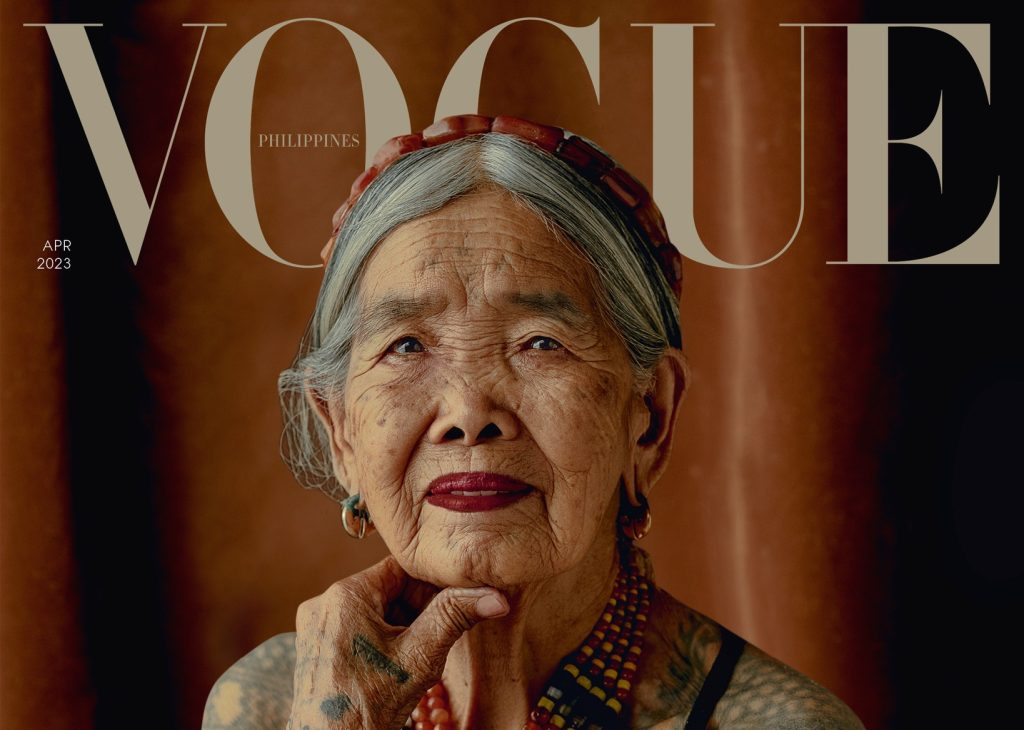
By Gabriela Baron
Whang-od Oggay, also known as Maria Oggay, a Filipina tattoo artist from Buscalan, Tinglayan in Kalinga graced the cover of Vogue Philippines.
Apo Whang-od, 106, is often described as the “last” and oldest “mambabatok” (traditional Kalinga tattoo). She is a also a part of the Butbut people.
Vogue Philippines noted that Apo Whang-od “symbolizes the strength and beauty of the Filipino spirit.”
“Heralded as the last mambabatok of her generation, she has imprinted the symbols of the Kalinga tribe–signifying strength, bravery, and beauty–on the skin of thousands of people who have made the pilgrimage to Buscalan,” Audrey Carpio from Vogue Philippines noted.
The Filipina tattoo artist has been tattooing headhunters and women of the Indigenous People of Butbut in Buscalan since she was 15 years old.
In those days, Vogue Philippines noted, unmarked women were considered “imperfect, undesirable,” as women then were tattooed for different reasons, including for fertility and beautification.
However, when the American Catholic missionaries came and built schools in Kalinga, village girls were made to cover with long sleeves.
“Being tattooed became a point of shame when women ventured to the city, and eventually fewer girls from the succeeding generation continued the tradition as Western concepts of beauty and respectability began to permeate the culture,” Carpio wrote.
“Mambabatok can only pass on their craft within their bloodlines, and Whang-Od never had any children of her own,” she added.
However, Whang-Od’s 26-year-old niece, Grace Palicas, was chosen to be her apprentice.
The National Commission for Culture and the Arts conferred on Whang-od the prestigious “Dangal ng Haraya Award” in Tabuk, Kalinga in 2018.
She was nominated for the National Living Treasure Award or the “Gawad Manlilikha ng Bayan” in 2017, but her nomination is still being processed.
“Elsewhere in the Philippines, Bukidnon tattoo practitioner Piper Abas is reviving the art of traditional Visayan and Mindanao tattooing, or patik,” Carpio wrote.
“More Filipinos choosing to get an indigenous tattoo, one that carries with it a long history, can be seen as a step toward decolonizing aesthetics, reclaiming our bodies, and reconnecting with our roots, our selves,” she further wrote. -ag
